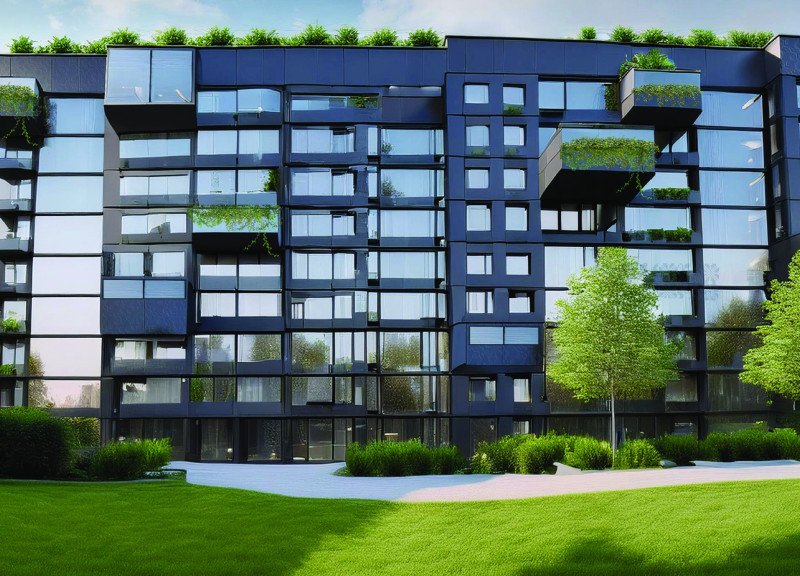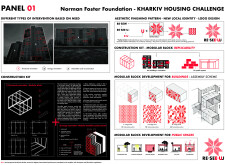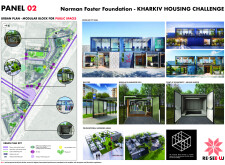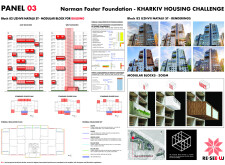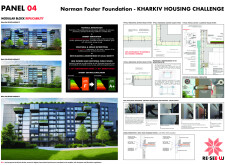5 key facts about this project
### Overview
The Kharkiv Housing Challenge, developed by the Norman Foster Foundation, addresses urgent housing needs within the urban context of Kharkiv, Ukraine. The project emphasizes modular design, sustainability, and cultural relevance, aiming to revitalize urban spaces while responding to socio-economic challenges and honoring the region's cultural heritage.
### Modular Construction and Community Integration
The design employs a modular block system that facilitates both the structural enhancement of existing buildings and the construction of new ones. This approach supports structural and energy renovations, integrating energy-efficient insulating systems, including thermal insulation boards and modular insulation panels. The replicable nature of these modular elements ensures versatility across varying urban settings, while personalization accommodates the unique requirements of the local environment. The aesthetic integration of traditional Ukrainian embroidery motifs, or "Vyshyvanka," into facade treatments and public spaces fosters a strong sense of identity and community engagement.
### Sustainability and Materiality
Emphasizing environmental responsibility, the project incorporates high-performance materials that adhere to international sustainability standards. Key components include thermal insulation boards aimed at energy efficiency, lightweight aluminum facade systems, and a commitment to natural and recyclable materials, with an aspiration for 100% recyclability. This material selection not only promotes energy conservation but also reflects a broader ecological awareness within the architectural framework, aligning with contemporary sustainability goals.
### Public Space and Safety Features
Functional public spaces are central to the design, including a modular city mall that harmonizes with the urban fabric. Safety considerations are paramount, with integrated air raid shelters enhancing community resilience in light of regional threats. Illuminated pathways and gathering areas are thoughtfully designed to encourage social interaction, reinforcing community participation and contributing to the overall vitality of the urban environment.


